You probably don’t need me to tell you just how impactful email marketing can be. But it’s still worth looking at the numbers because they make for pretty impressive reading.
According to a survey from Litmus, the average email marketing program delivers a return on investment (ROI) of $37 for every single dollar spent. Even more impressively, that jumps to 42:1 for brands that describe their email marketing strategies as “successful”.
That might not sound like a big difference, but if you invest $10,000 in your email marketing, that equates to a $50,000 sales gap between an average and successful program.
In other words, it’s in your best interests to ring every ounce of performance from your email marketing campaigns –– and that means driving email engagement.
No wonder, then, that three in five marketers say their number one priority is to increase engagement rates. However, that’s clearly no easy task, with over two-fifths of respondents also naming it as their biggest digital marketing challenge.
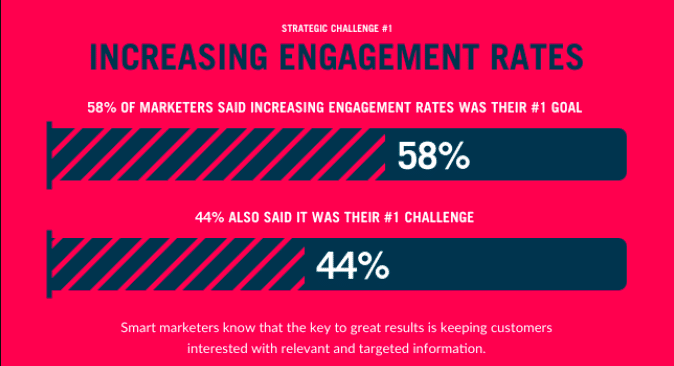
But while it’s undoubtedly hard to boost email engagement, it’s by no means impossible. Read on for some essential definitions, followed by seven tried-and-trusted strategies to help you get it right.
What Do We Mean By “Email Engagement?”
The term “email engagement” is pretty nebulous –– it can refer to a lot of different things.
One marketer might use it to broadly refer to the number of people who open their email newsletters, whereas another might be talking about hard-and-fast metrics.
So before we dive into methods for improving email engagement, it makes sense to clarify exactly what we’re talking about. When we say “email engagement”, we’re referring to improving three key email marketing metrics:
- Email open rate: The percentage of people on your marketing list who open a specific email.
- Click-through rate: The percentage of people who clicked at least one link in a given email.
- Conversion rate: The percentage of email subscribers who complete a desired action –– like downloading an ebook or buying a product –– after clicking through from an email.
As you can likely see, if you’re able to improve each of those metrics, you’ll be well placed to generate higher returns from your email marketing expenditure.
How to Improve Your Email Engagement Metrics
Now that we’re clear on exactly what we mean by “email engagement”, let’s dive into seven proven email marketing tactics to boost your open, click-through, and conversion rates:
1. Segment Your Email Lists
If you know anything about email marketing –– which, if you’re reading this article, you presumably do –– then you’ll already know about the benefits of personalization. Unsurprisingly, we’re going to talk about it a lot in this article, because it’s a surefire way to drive email engagement.
But before we reach that point, we need to get one thing straight: personalization without segmentation just doesn’t work (for most brands).
If you have an extremely high-value product that requires ongoing payments –– such as a SaaS product –– you can potentially afford to work with a tiny email list and personalize your emails on a one-on-one level. But for most businesses, that sort of labor-intensive approach just isn’t practical or cost effective.
Which is precisely why you need email segmentation.
Think about it: if you’re not segmenting your audience, you’re effectively working with a single email list. And unless every single person on that list is approximately the same age, has the same hobbies and interests, pain points, and goals, and lives in the same place, it’s highly doubtful you’ll be able to do personalization effectively. At best, you’ll be able to do some basic personalization; at worst, your emails will be totally generic.
All of which means that segmented email campaigns massively outperform non-segmented ones. According to one study, compared to non-segmented campaigns, segmented email campaigns achieve:
- 11% more unique opens
- 14% higher open rates
- 101% more clicks
So segmentation should absolutely be the first step in improving your email engagement.
Cut and slice your email list in as many ways as you see fit; don’t limit yourself to basic, top-level segments like age, gender, and location. Target different sizes of company and different use cases.
The more you segment, and the more laser-focused those segments, the more highly personalized your emails will be –– and the more you’ll sell.
2. Personalize Your Imagery
The days of sending generic newsletters to thousands of people are way behind us, because it simply doesn’t yield results anymore.
Today, personalization and understanding your demographics are everything. Nine in 10 leading marketers agree that it significantly contributes to business profitability, while three-fifths of consumers expect brands to offer tailored experiences based on their preferences.
Unfortunately, a lot of marketers see the word “personalization”, add a {first.name} field to their email subject line, and call it a day.
That sort of superficial, unengaged personalization just doesn’t cut the mustard today. Modern consumers are smart; they want real relevant content personalization that makes it feel like an email was truly crafted for them and no one else. Content and offers that speak to their specific needs and challenges.
Personalizing your copy to reference specific pain points and relevant products is a good starting point. But it’s only that: a starting point.
To truly dazzle your audience and drive email engagement, you need to start personalizing your imagery too. Indeed, one study found that personalized imagery can lead to a 14x increase in email click-through rates.
Sounds like a lot of work? If you do it all manually, it definitely is.
Fortunately, tools like Hyperise make image personalization quick and simple.

Hyperise allows you to create images that personalize to each recipient using your existing CRM, email, and automated marketing platforms. It’s just like adding personalized copy to templated emails, except it’s in visual form, which makes it highly impactful.
3. Leverage the Power of Automation
In that last point, we referenced how Hyperise links up with your favorite marketing automation tools. Which brings us smoothly to our next point: if you’re not already taking advantage of email marketing automation, you definitely should be.
Email automation works, allowing you to spend less time on simple, generic copywriting tasks, and more on the high-value, high-impact process of personalizing your marketing communications. It gives you the freedom to contact thousands of prospects all at once with personalized email campaigns, fully automated follow-up emails, maximized deliverability, and proven templates.
So it’s no wonder that marketers named email marketing as the second most important use case for automation software, only behind scheduling social media posts:
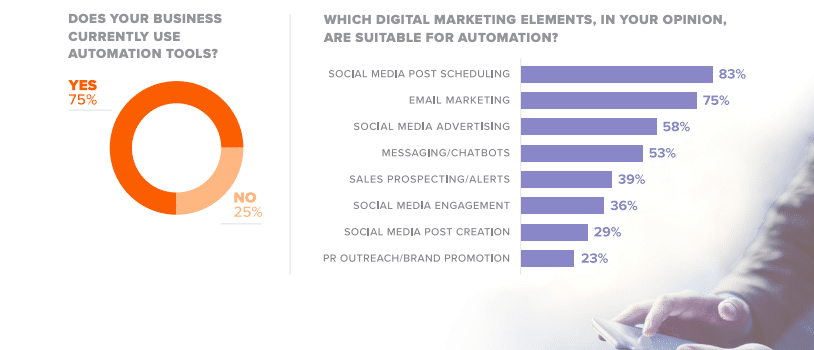
Of course, automation is only effective if the various platforms and tools you rely on day in, day out actually work together.
If not, you might end up saving time on some tasks, but wasting a whole lot more time on creating new processes and manually shifting data from one platform to another. That’s exactly the kind of drudge work you’re trying to avoid.
So you’ll be pleased to learn that Mailshake –– an email automation platform trusted by almost 50,000 happy customers –– integrates with Hyperise. That means you get the twin benefits of impactful, personalized email copy and personalized images. And that’s a strong recipe for improving your email engagement.
4. Write Stronger Subject Lines
Okay, it might sound obvious, but we simply can’t write about email engagement without taking a look at email subject lines.
Why? Because by 2022, the average person is expected to receive 333 business and consumer emails a day. In a cluttered inbox, your subject line will ultimately make the difference between a recipient clicking your email or scrolling right on by.
But what does a “stronger subject line” actually look like?
Well, there are several steps to creating subject lines that compel people to click –– enough to fill a whole separate article –– so we’re just going to focus on a couple key elements:
- Personalization: The “P” word again. Emails with personalized subject lines are 26% more likely to be opened, so you can’t afford to ignore personalization at this stage. That doesn’t just mean including the recipient’s first name. Make it feel like the whole email is personalized to their needs.
- Length: On a simple level, if your subject line is too long, it’s going to truncate, so it won’t be as impactful. Subject lines cut off at around 41 characters on an iPhone (in portrait mode) and 70 characters in the Gmail app.
- Emojis: Sure, emojis aren’t right for every brand. But lots of marketers use them effectively in email subject lines. Indeed, according to one study, brands that use emojis see a 56% increase in unique open rates.
To be clear, we’re not saying every subject line needs to contain seven words, 41 characters, an emoji or two, and be personalized to each individual recipient. Sometimes a simple “Get 10% off if you buy now” will work perfectly well. But if you keep those basic principles in mind, your subject lines –– and engagement metrics –– should naturally improve over time.
5. Aim to Drive a Single Action
We’ve already noted the sheer volume of emails people receive every day. With that level of competition, it’s a wonder anyone ever opens your messages. So the last thing you want is to persuade someone to click, only to present them with ambiguous, uninspiring messaging that doesn’t clearly explain the action you want them to take next.
When it’s so difficult to win the click in the first place, it’s hardly surprising that some marketers are tempted to cram each and every email with as many offers and links to interesting content as possible in the hope that something will stick.
But in reality, the smart move is to focus on a single action that’s 100% relevant to the audience segment you’re targeting, then build the whole email –– including subject line, intro, body copy, imagery, and call to action (CTA) –– around driving that one purpose.
That’s exactly what Netflix does here:
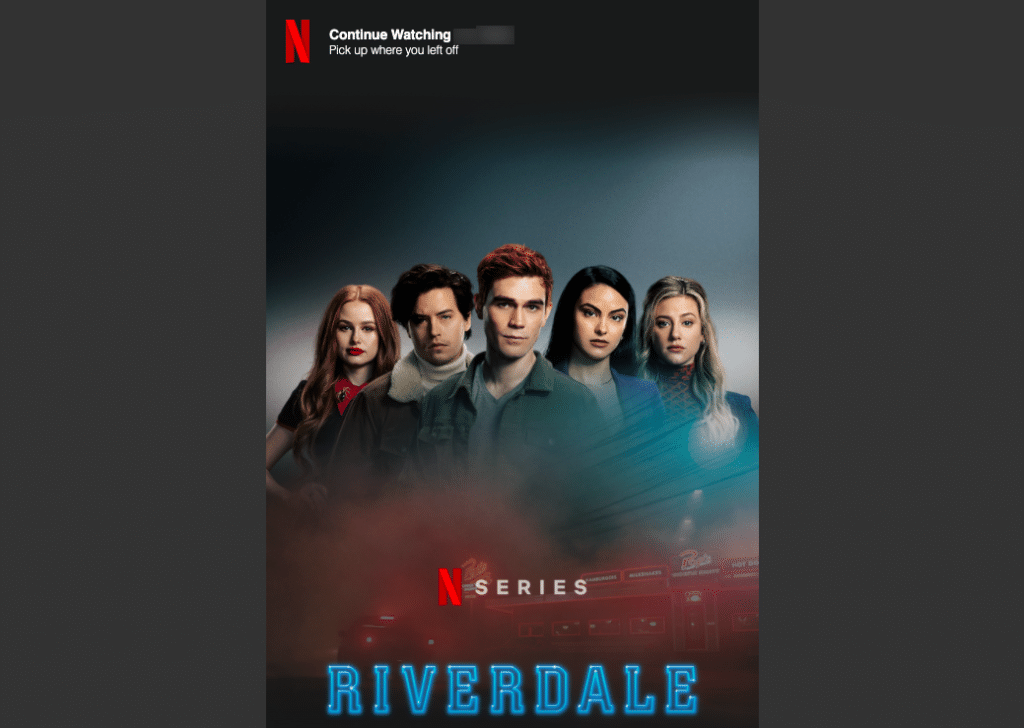
It’s completely obvious what Netflix wants us to do next: keep watching Riverdale!
That’s a totally relevant action, because the video streaming platform’s data obviously shows that the recipient has watched the show before, and that there are new episodes available to watch right now.
Would this email be more effective if it referenced a bunch of other shows the user has watched in the past? And if it also compelled the recipient to upgrade their account? Almost certainly not.
Once you’ve decided on the one clear action you’re attempting to drive with each email, you can use that information to create compelling calls to action and a strong subject line that ties into the rest of the email. For reference, here’s the subject line Netflix used for the above email:
6. Add Social Proof to Drive Conversions
As human beings, we’re naturally predisposed to follow the crowd and copy other people’s actions. This psychological phenomenon is often referred to as “social proof”.
Social proof is a powerful tool for retaining existing customers and winning new ones. What’s more, evidence suggests it’s becoming even more powerful. According to one study, the percentage of consumers who say they always trust online reviews as much as personal recommendations more than doubled between 2015 and 2018:
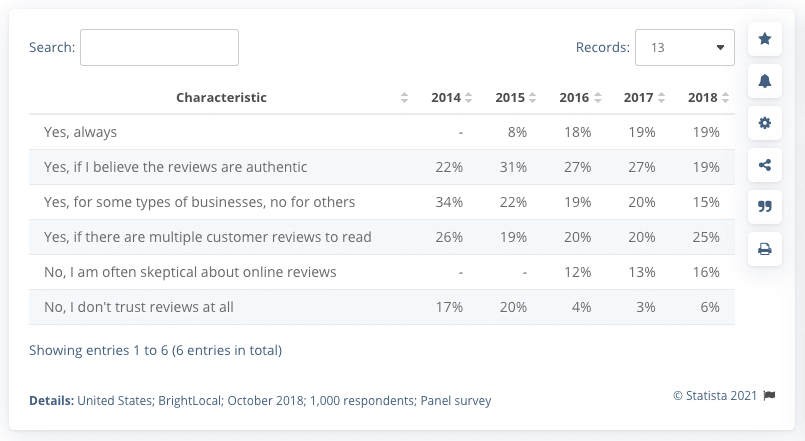
From a sales and marketing perspective, that means your email marketing should be highlighting things like:
- Positive reviews
- Customer testimonials
- Case studies
- Star ratings on platforms like Trustpilot
- Industry awards and accreditations
In other words, don’t just tell people how brilliant your product is; show them through social proof. Use case studies to highlight how similar brands are using your product; include quotes from testimonials highlighting some of the big names already benefiting from your solution; and shout about the high-profile award you’ve just won.
That’s exactly what creative collaboration platform Niice does in this email:
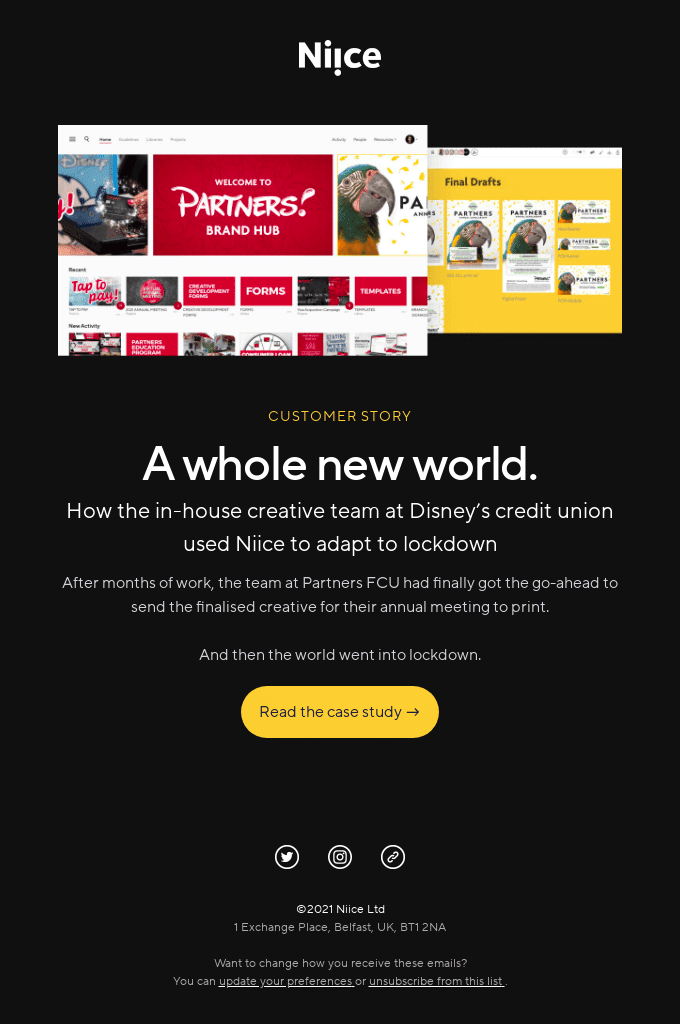
It incorporates a compelling story about a high-profile brand utilizing the platform to overcome a challenge that’s likely relevant to a whole lot of current and future Niice customers. If you’re looking for a solution to that same problem, it’s highly likely you’d click through to read the case study.
7. Ask Your Subscribers What They Want
As with many of the best marketing tactics, this final strategy is extremely simple but also highly effective.
Simply put, there’s no easier way to find out what your audience wants from your email marketing communications than to ask them. Sure, data can give you some incredible insights into audience behavior and preferences, but you should never focus solely on the numbers at the expense of what your users are actually telling you.
From an email marketing perspective, there are two quick and easy ways to find out what your subscribers want from you:
- Ask new subscribers to choose their preferences: Get them to tell you what types of content they want to receive, which content formats they prefer, and how often they want to hear from you. That way, you’ll dramatically reduce your unsubscribe rates and improve engagement, because you’re giving people what they want from day one.
- Survey existing email subscribers: Periodically ask your subscribers how they’re enjoying being subscribed to your email list. Seek their feedback on the types of content you’re sending, and what they’d like to see more (or less) of in future.
The great thing about this tactic is that whether or not you get a ton of responses, the simple act of soliciting opinions demonstrates that you’re genuinely interested in your audience. Whether or not they reply to you, there’s a good chance recipients will feel more engaged with your email content down the line.
Final Thoughts
It isn’t rocket science to increase email engagement. If your engagement isn’t where you’d like it to be, there’s no need to tear up your playbook and start from scratch.
Instead, it’s mostly about getting away from the mindset of sending generic mass email messages, and refocusing on personalizing each and every email –– supported by effective segmentation and dynamic content –– so that each subscriber feels like you’re speaking to them as an individual.
Give users content and offers that are highly relevant to their needs, and ask what else they want from you.
Keep doing it, while A/B testing to see which messaging yields the best results, and your open, click-through, and conversion rates should go through the roof.
Author Bio

Sam Molony is part of the marketing team at Mailshake. Sam’s goal is to inspire people to not just “hang in there” but to thrive. When Sam’s not publishing or promoting new content you can find him playing sports and cooking up a storm in the kitchen.
Last Updated on November 4, 2021 by Eduard Klein